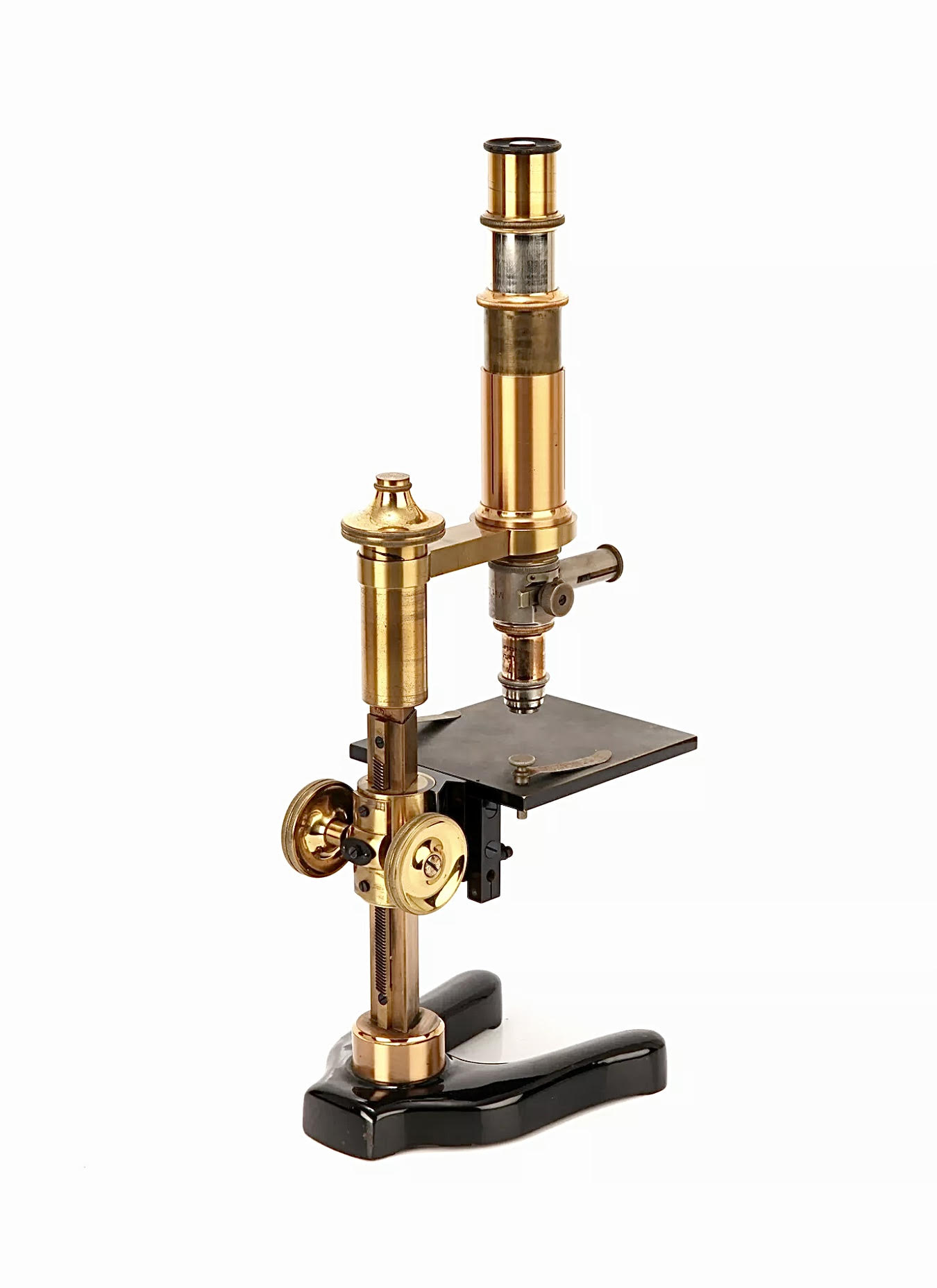Petrological or polarization microscopes are essentially optical microscopes with all their components that also polarize monochromatic light. After passing through the object of study, it is analyzed and its characteristics can be identified. These are complex devices that are also called mineralogical microscopes.

Fig 1. Ancient petrological microscope

Fig 2. Modern petrological microscopeo
The first devices with polarization accessories, already in the middle of the XIX century, facilitated the knowledge of minerals. Essential to the development of mineralogy as a science, the polarization microscope has evolved over the years with different models to observe and measure the optical properties of minerals. This technique is based on the changes that light undergoes as it passes through it to determine its structure and composition.
Essentially, petrology or polarization microscopes have two prisms. A double Nicol prism, under the condenser, which polarizes the monochromatic light that comes from the base and passes through it. The already polarized light passes through the condenser and reaches the stage, which is circular divided into 360º and has a rotary movement, where the sample to be observed is located.
After passing through the object, the rays reach the target and pass through the analytical polarizer, which is located in the optical tube. This is also called a sheet polarizer and it is easily removed (fig. 1 and 2). Finally, the image reaches the eyepiece. Although this device has maintained its essential structure over the years, it has continued to evolve until 1950. The initial models are characterized by their functional elegance, beauty being part of their design. Consequently, these models and their accessories have become collector’s items due to their aesthetics and qualities (fig. 3 and 4).

Microscopio petrológico, condensador con cristal polarizador y platina circular graduada en 360º.

Microscopio petrológico en el que se pueden observar los filtros del tubo óptico.
El microscopio en Criminología y Ciencias Forenses
Microscopy has proven to be an essential technique in its applications to the identification of people and materials and the resolution of crimes. The stereoscopic microscope is one of them, important in the identification of injuries and trauma, detection of foreign bodies and obtaining samples for genetic studies. The microscope is essential in the identification of hair as forensic evidence. It is a very old technique that has allowed the investigation of numerous crimes. Likewise, the use of the optical microscope is essential for the identification of fibres, fabrics or other materials. This capacity was significantly improved with the introduction of the petrological microscope with polarizer and analyzer using the technique of studying fibres under polarized light.
In this collection, the petrological microscopes are represented by seven devices, ranging from very simple small instruments, such as those manufactured by Nachet (nº 77a & 77b ) to the more complex, the «screw measurement microscope» Swift and son. This manufacturer specialized in petrographic microscopes, such as nº 77 & nº 78. The nº 79 is Watson’s great microscope and finally Leitz´s microscope number 79a , used at Imperial College London.








